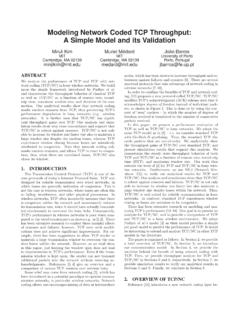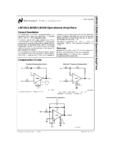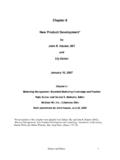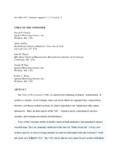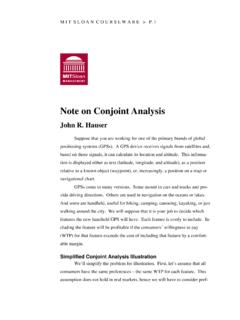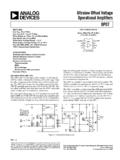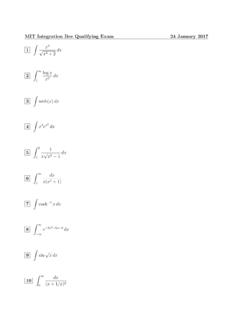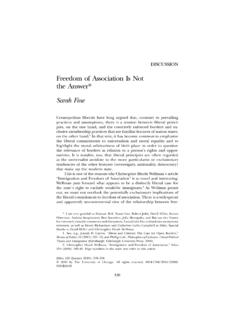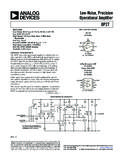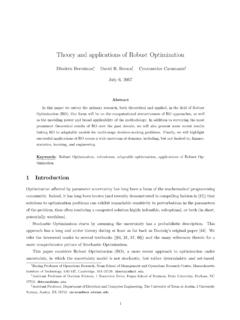Transcription of Efficient wireless non-radiative mid-range energy transfer
1 Available online at Annals of Physics 323 (2008) 34 48. E cient wireless non-radiative mid-range energy transfer a,*. Aristeidis Karalis , Joannopoulos b, Marin Soljac ic b a Department of Electrical Engineering and Computer Science, Massachusetts Institute of Technology, 77 Massachusetts Avenue, Cambridge, MA 02139, USA. b Department of Physics, Massachusetts Institute of Technology, 77 Massachusetts Avenue, Cambridge, MA 02139, USA. Received 17 April 2007; accepted 17 April 2007. Available online 27 April 2007. Abstract We investigate whether, and to what extent, the physical phenomenon of long-lifetime resonant electromagnetic states with localized slowly-evanescent eld patterns can be used to transfer energy e ciently over non-negligible distances, even in the presence of extraneous environmental objects.
2 Via detailed theoretical and numerical analyses of typical real-world model-situations and realistic material parameters, we establish that such a non-radiative scheme can lead to strong coupling''. between two medium-range distant such states and thus could indeed be practical for e cient med- ium-range wireless energy transfer . 2007 Elsevier Inc. All rights reserved. Keywords: wireless energy ; wireless power; Strong coupling 1. Introduction In the early days of electromagnetism, before the electrical-wire grid was deployed, seri- ous interest and e ort was devoted (most notably by Nikola Tesla [1]) towards the devel- opment of schemes to transport energy over long distances without any carrier medium ( wirelessly).
3 These e orts appear to have met with little success. Radiative modes of *. Corresponding author. Fax: +1 617 253 2562. E-mail address: (A. Karalis). 0003-4916/$ - see front matter 2007 Elsevier Inc. All rights reserved. A. Karalis et al. / Annals of Physics 323 (2008) 34 48 35. omni-directional antennas (which work very well for information transfer ) are not suitable for such energy transfer , because a vast majority of energy is wasted into free space. Directed radiation modes, using lasers or highly-directional antennas, can be e ciently used for energy transfer , even for long distances ( transfer distance LTRANS LDEV, where LDEV is the characteristic size of the device), but require existence of an uninterruptible line-of-sight and a complicated tracking system in the case of mobile objects.
4 Rapid development of autonomous electronics of recent years ( laptops, cell-phones, house-hold robots, that all typically rely on chemical energy storage) justi es revisiting investigation of this issue. Today, we face a di erent challenge than Tesla: since the exist- ing electrical-wire grid carries energy almost everywhere, even a medium-range (LTRANS few*LDEV) wireless energy transfer would be quite useful for many applica- tions. There are several currently used schemes, which rely on non-radiative modes (magnetic induction), but they are restricted to very close-range (LTRANS LDEV) or very low-power ( mW) energy transfers [2 6]. In contrast to all the above schemes, we investigate the feasibility of using long-lived oscillatory resonant electromagnetic modes, with localized slowly-evanescent eld patterns, for e cient wireless non-radiative mid-range energy transfer .
5 The proposed method is based on the well known principle of resonant coupling (the fact that two same-frequency reso- nant objects tend to couple, while interacting weakly with other o -resonant environmental objects) and, in particular, resonant evanescent coupling (where the coupling mechanism is mediated through the overlap of the non-radiative near- elds of the two objects). This well known physics leads trivially to the result that energy can be e ciently coupled between objects in the extremely near eld ( in optical waveguide or cavity couplers and in res- onant inductive electric transformers). However, it is far from obvious how this same phys- ics performs at mid-range distances and, to our knowledge, there is no work in the literature that demonstrates e cient energy transfer for distances a few times larger that the largest dimension of both objects involved in the transfer .
6 In the present paper, our detailed the- oretical and numerical analysis shows that such an e cient mid-range wireless energy - exchange can actually be achieved, while su ering only modest transfer and dissipation of energy into other o -resonant objects, provided the exchange system is carefully designed to operate in a regime of strong coupling'' compared to all intrinsic loss rates. The physics of strong coupling'' is also known but in very di erent areas, such as those of light-matter interactions [7]. In this favorable operating regime, we quantitatively address the following questions: up to which distances can such a scheme be e cient and how sensitive is it to external perturbations?
7 The omnidirectional but stationary (non-lossy). nature of the near eld makes this mechanism suitable for mobile wireless receivers. It could therefore have a variety of possible applications including for example, placing a source (connected to the wired electricity network) on the ceiling of a factory room, while devices (robots, vehicles, computers, or similar) are roaming freely within the room. Other possible applications include electric-engine buses, RFIDs, and perhaps even nano-robots. 2. Range and rate of coupling The range and rate of the proposed wireless energy - transfer scheme are the rst subjects of examination, without considering yet energy drainage from the system for use into work.
8 An appropriate analytical framework for modeling this resonant energy -exchange is that of the well-known coupled-mode theory (CMT) [8]. In this picture, the eld of 36 A. Karalis et al. / Annals of Physics 323 (2008) 34 48. the system of two resonant objects 1 and 2 is approximated by F(r, t) a1(t)F1(r) +. a2(t)F2(r), where F1,2(r) are the eigenmodes of 1 and 2 alone, and then the eld amplitudes a1(t) and a2(t) can be shown [8] to satisfy, to lowest order: da1. dt i x1 iC1 a1 ija2. da2. ; 1 . dt i x2 iC2 a2 ija1. where x1,2 are the individual eigenfrequencies, C1,2 are the resonance widths due to the objects' intrinsic (absorption, radiation, etc.) losses, and j is the coupling coe cient.
9 Eqs. (1) show that at exact resonance (x1 = x2 and C1 = C2), the normal modes of the combined system are split by 2j; the energy exchange between the two objects takes place in time p/2k and is nearly perfect, apart for losses, which are minimal when the coupling p . rate is much faster than all loss rates (j C1,2).1 It is exactly this ratio j= C1 C2 that we will set as our gure-of-merit for any system under consideration for wireless energy -trans- fer, along with the distance over which this ratio can be achieved. The desired optimal re- p . gime j= C1 C2 1 is called strong-coupling'' regime. Consequently, our energy - transfer application requires resonant modes of high Q = x/. 2C for low (slow) intrinsic-loss rates C, and this is why we propose a scheme where the coupling is implemented using, not the lossy radiative far- eld, but the evanescent (non- lossy) stationary near- eld.
10 Furthermore, strong (fast) coupling rate j is required over dis- tances larger than the characteristic sizes of the objects, and therefore, since the extent of the near- eld into the air surrounding a nite-sized resonant object is set typically by the wavelength (and quanti ed rigorously by the radiation caustic''), this mid-range non- radiative coupling can only be achieved using resonant objects of subwavelength size, and thus signi cantly longer evanescent eld-tails. This is a regime of operation that has not been studied extensively, since one usually prefers short tails to minimize interfer- ence with nearby devices. As will be seen in examples later on, such subwavelength reso- nances can often be accompanied with a high radiation-Q, so this will typically be the appropriate choice for the possibly-mobile resonant device-object d.
